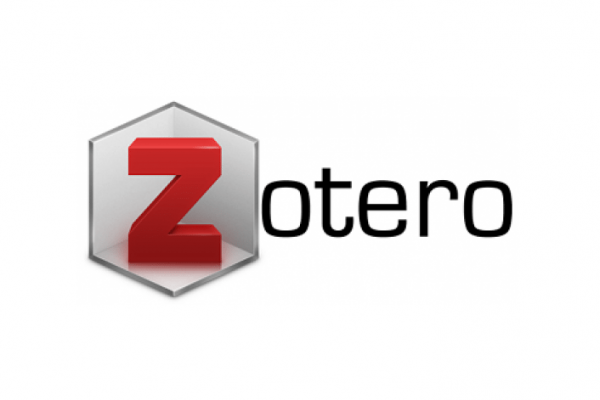Code-Switching: Teacher Strategy in Arabic Learning
Abstract
This study describes how code-switching between first language (L1) and foreign language (FL) is used as teaching strategy by teachers in Arabic learning. The method used in this study was a descriptive qualitative. The data sources were Arabic teachers in East Java and Bali. Data collection techniques used in this research were interviews and observations analyzed in three stages: reducing data, presenting data, and drawing conclusion. The result showed that Arabic teachers agreed that code-switching could be used as a teaching strategy to facilitate students' understanding of learning materials. Code-switching function can be applied in three aspects: 1) curriculum activity, 2) class management and 3) interpersonal relationship. Code-switching can be an essential part that Arabic teachers can utilize in carrying out the learning process in the classroom. Teachers can use it as an indirect strategy if using Arabic does not fulfill the learning objectives.
Keywords
Full Text:
PDFArticle Metrics
Abstract view : 353 times | PDF view : 277 timesReferences
A’la, H. A., & Mulawarman, W. G. (2020). Alih Kode dan Campur Kode Bahasa Arab pada Pembelajaran di Pondok Pesantren Ibadurrahman Kutai Kartanegara Kalimantan Timur. Jurnal Ilmu Budaya, 4, 642–650. http://dx.doi.org/10.30872/jbssb.v4i4.3025
Cahyani, H., de Courcy, M., & Barnett, J. (2018). Teachers’ code-switching in bilingual classrooms: Exploring pedagogical and sociocultural functions. International Journal of Bilingual Education and Bilingualism, 21(4), 465–479. https://doi.org/10.1080/13670050.2016.1189509
Etikan, I. (2016). Comparison of Convenience Sampling and Purposive Sampling. American Journal of Theoretical and Applied Statistics, 5(1), 1. https://doi.org/10.11648/j.ajtas.20160501.11
Fachriyah, E. (2017). The functions of code-switching in an English language classroom. Studies in English Language and Education, 4(2), 148. https://doi.org/10.24815/siele.v4i2.6327
Ferguson, G. (2003). Classroom code-switching in post-colonial contexts: Functions, attitudes, and policies. AILA Review, 16, 38–51. https://doi.org/10.1075/aila.16.05fer
Kridalaksana, H. (2008). Kamus linguistik (Ed. 4). Gramedia Pustaka Utama.
Lin, A. (2013). Classroom code-switching: Three decades of research. Applied Linguistics Review, 4(1), 195–218. https://doi.org/10.1515/applirev-2013-0009
Maluleke, M. J. (2019). Using code-switching as an empowerment strategy in teaching mathematics to learners with limited proficiency in English in South African schools. South African Journal of Education, 39(.), 1–9. https://doi.org/10.15700/saje.v39n3a1528
Miles, M. B., & Huberman, A. M. (2014). Qualitative data analysis: A methods sourcebook (Third edition). SAGE Publications, Inc.
Mu'in, A. (2011). Code-Switching as a Communication Strategy. Jurnal Adabiyah, 11(2). 264-276. Retrieved from https://journal.uin-alauddin.ac.id/index.php/adabiyah/article/view/1738
Mustikawati, D. A. (2016). Alih Kode dan Campur Kode Antara Penjual dan Pembeli (Analisis Pembelajaran Berbahasa melalui Studi Sosiolinguistik). Jurnal Dimensi Pendidikan Dan Pembelajaran, 2(2), 23–32. http://dx.doi.org/10.24269/dpp.v2i2.154
Puspawati, I. (2018). Teachers' Use of Code-Switching in EFL Classroom and its Functions. Journal of Foreign Language Teaching and Learning, 3(1). https://doi.org/10.18196/ftl.3128
Rianti Sari, R. (2016). Sikap Guru Bahasa Arab dan Siswa terhadap Alih Kode dan Petanan Alih Kode dalam Pembelajaran Bahasa Arab di MA Bilingual Batu [Thesis, Universitas Islam Negeri Maulana Malik Ibrahim Malang]. http://etheses.uin-malang.ac.id/8723/
Rosyidi, A. W., & Wijaya, J. I. M. (2020). Takhlīth as-Syifroh fī Tadrīs Mahārah al-Qirāah (Dirāsah Washfiyyah Tahlīliyyah Jāmi’ah Imam Bonjol al-Islāmiyyah Al-Hukūmiyyah Padang). Taqdir: Jurnal Pendidikan Bahasa Arab dan Kebahasaaraban, 6(2), 1–27. https://doi.org/10.19109/taqdir.v6i2.6176
Sarwono, J. (2006). Metode Penelitian Kuantitatif dan Kualitatif (Edisi Pertama). Penerbit Graha Ilmu. https://www.academia.edu/21354427/Metode_penelitian_kuantitatif_and_kualitatif_Jonathan_Sarwono
Sert, O. (2005). The Functions of Code-Switching in ELT Classrooms. The Internet TESL Journal, Vol. XI, No. 8, August 2005. Retrieved from http://iteslj.org/Articles/Sert-CodeSwitching.html
Sezen Seymen Bilgin. (2016). Code-switching in English language teaching (ELT) teaching practice in Turkey: Student-teacher practices, beliefs, and identity. Academic Journals, 11, 686–702. https://doi.org/10.5897/ERR2016.2802
Shafi, S. (2020). Benefits of code-switching in language learning classroom at University of Education Lahore. International Research Journal of Management, IT and Social Sciences. https://doi.org/10.21744/irjmis.v7n1.842
Songxaba, S. L., Coetzer, A., & Molepo, J. M. M. (2017). Perceptions of teachers on creating space for code-switching as a teaching strategy in second language teaching in the Eastern Cape province, South Africa. Reading & Writing, 8(1). https://doi.org/10.4102/rw.v8i1.141
Sudarja, K. (2019). Alih Kode dan Campur Kode dalam Proses Pengajaran Bahasa Indonesia. ALFABETA: Jurnal Bahasa, Sastra, Dan Pembelajarannya, 2(2), 35–49. https://doi.org/10.33503/alfabeta.v2i2.613
Zuliana, E. (2017). Analisis Campur Kode (Mixing Code) dan Alih Kode (Code Switching) Dalam Percakapan Bahasa Arab (Studi pada Mahasiswa Prodi Pendidikan Bahasa Arab IAIM NU Metro Lampung). Jurnal Iqra’, 1(Vol 1 No 2 (2016): Iqra : Jurnal Kajian Ilmu Pendidikan), 109–164. Retrieved from https://journal.iaimnumetrolampung.ac.id/index.php/ji/article/view/71
DOI: https://doi.org/10.23971/altarib.v10i1.3703
Article Metrics
Abstract view : 353 timesPDF - 277 times
Refbacks
- There are currently no refbacks.
Copyright (c) 2022 Adella Ira Wanti, Zakiyah Arifa

This work is licensed under a Creative Commons Attribution-ShareAlike 4.0 International License.
Indexed By:
Tool:




Al-Ta'rib : Jurnal Ilmiah Program Studi Pendidikan Bahasa Arab IAIN Palangka Raya is published by Arabic Education Departement (PBA), the Faculty of Education and Teacher Training (FTIK),� State Islamic Institut (IAIN) of Palangka Raya in partnership with IMLA (Association of Arabic Lecturers).
Editor and Administration Address:
Arabic Education Departement (PBA), the Faculty of Education and Teacher Training (FTIK),� State Islamic Institut (IAIN) of Palangka Raya, Jalan G. Obos Komplek Islamic Centre Palangka Raya, Kalimantan Tengah, Indonesia, Postal Code 73111.Email: [email protected]/[email protected], Website: http://e-journal.iain-palangkaraya.ac.id/index.php/tarib
This work is licensed under a Creative Commons Attribution-ShareAlike 4.0 International License.



















